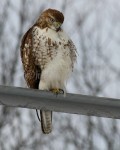
Red-tailed Hawk catches its prey, a Short-tailed Shrew at Mitchell Park in Brookfield WI. Photographs taken on February 5, 2014.
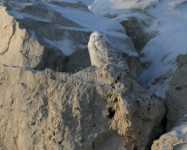
Snowy Owl photographs taken at Lakeshore State Park on Milwaukee’s Lakefront on December 9, 2013.
Binomial name: Bubo scandiacus
Category: Typical Owls
Description: Adult males are mostly white with a few dark feather tips. Adult females and juveniles are white with dark scalloping on chest, back, wings, and tail. Yellow eyes, black beak, and feathery feet.
Size: 20”- 28” long, 49” – 59” wingspan
Weight: 3.5 lb. – 6.6 lb.
Habitat: Wide open, treeless spaces such as shorelines, lakes, open fields, and agricultural sites.
Diet: Small mammals such as rodents, lemmings, voles, mice, rats, rabbits, squirrels, raccoons, and other birds such as shorebirds, songbirds, ducks, geese, and pheasants.
Nesting: The female builds a nest on a mound with good visibility. She scrapes away the top layer of soil and, over several days, presses her body into the ground to make a depression. She will lay a clutch of 3 to 11 eggs and incubate them for about 5 weeks. Both parents will defend the nest and care for the hatchlings which are born pure white. The same nest may be used year after year.
Notes: Snowy owls are considered the heaviest owl in North America, weighing about a pound more than its closest contender, the Great Horned Owl. A snowy owl was featured in the Harry Potter series when Harry received his pet, Hedwig. It is also the official bird of Quebec.
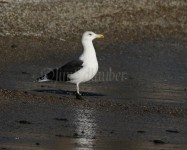
Binomial name: Larus marinus
Category: Gulls, Terns, and Skimmers
Description: The largest member of the gull family. White feathers with grayish-black backs and wings. The wings have white wingtips. Pink legs, strong yellow or pinkish-yellow bill.
Size: 25” – 31” long, 4’ 10” – 5’ 7” wingspan
Weight: 1.7 lbs. – 5.1 lbs.
Habitat: Rocky and sandy coastal shorelines, ponds, lakes, and marshes
Diet: 50% or more of their diet is often garbage or human refuse. They also eat fish, insects, crabs, smaller birds, chick eggs, and land animals such as rats.
Nesting: Both parents build several nests on or near stacks of rocks or fallen logs. The female chooses the best one, and it is lined with grass, seaweed, and other vegetation or garbage such as rope and pieces of plastic. The female will lay a clutch of 3 eggs and both parents incubate them for about 28 days. Both parents raise the hatchlings, take turns finding food. The breeding pair will reuse the same nesting site year after year.
Notes: Great Black-backed Gull feathers were used in clothing while feathers were fashionable in the late 1800’s. Once the trend ended, populations began to increase. This trend continues with the increase in refuse sites across North America and Europe.
To view the gallery of images, please click here.
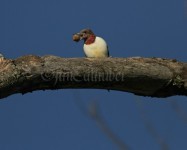
A Red-headed Woodpecker adult and juveniles storing acorns for the winter in Marquette County, WI. Photographs taken November 19, 2013.
To see the gallery of images, please click here.
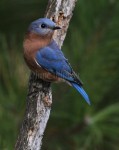
While birdwatching in Marquette County, I was able to photograph Eastern Bluebirds, a Red-headed Woodpecker, and others on October 26, 2013. Images were taken near a small water source where birds were coming and going, bathing, preening and drinking.
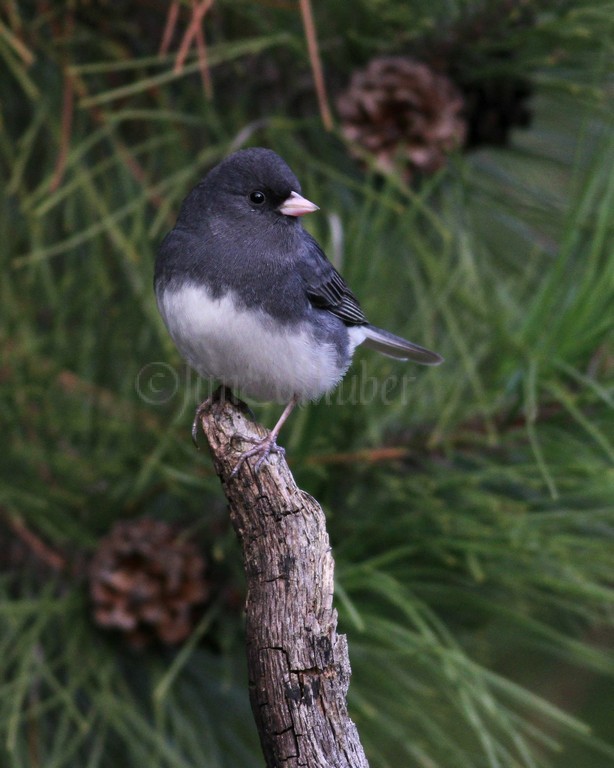
Dark-eyed Junco
To see the gallery of images, please click here.
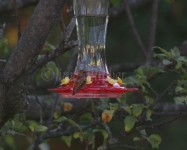
Rufous Hummingbird photographed in Sheboygan, Wisconsin on October 27, 2013.
Binomial name: Selasphorus rufus
Category: Hummingbirds
Description: Primarily rust-colored feathers with a small patch of white on the chest. Red-orange patch on throat. Short wings and a slender, slightly sloping bill.
Size: 2.8″-3.5″ long, 3” – 4” wingspan
Weight: 0.071 oz. – 0.18 oz
Habitat: Open broadleaf forests, orchards, meadows, parks, swamps, and yards
Natural Range: West Coast from Alaska to Mexico and Rocky Mountains, wintering in the Gulf Coast and Southeastern Atlantic states. They are occasionally, although rarely, found in cold-weather areas such as the Midwest due to their surprising hardiness.
Diet: Tree and flower nectar, small insects, and hummingbird feeders
Nesting: The males may mate with several females but do not care for the young. The female provides all parental care, building a nest in a protected tree or shrub. They favor either deciduous or coniferous trees such as spruce, cedar, maples, pines, birch, and hemlocks. The nest is made out of bud scales, lichen, spider silk, and dandelion or thistle down. The same nest may be used year after year and not necessarily by its previous occupant. The female will lay 2-3 eggs at a time, laying 1 brood per summer. She incubates the eggs for 15-17 days, and the young remain in the nest for 15-19 days.
Notes: This high-strung bird is considered extremely aggressive and will chase other animals from feeders or its nest including larger birds, chipmunks, and even other hummingbirds. Like other hummingbirds, Roufus Hummingbirds are adept flyers and can hover, dart, and perch with ease. They have even been seen to pluck insects out of midair.
To see the gallery of images, please click here.
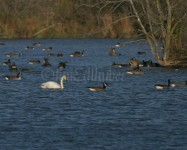
Whooper Swan photographed at the Otsego Marsh in Columbia County, Wisconsin on October 27, 2013. At this time it is unknown if this bird is a wild bird or an escapee bird.
Binomial name: Cygnus cygnus
Category: Ducks, Geese, and Swans
Description: White body with a black and yellow bill, more yellow than black. Black legs and feet.
Size: 55” – 65” long, 81” – 108” wingspan
Weight: 16 lbs. – 31 lbs.
Habitat: Freshwater lakes, shorelines, slow rivers, wetlands, marshes, swamps, and bogs
Natural Range: Breeds in Northern Eurasia and winters primarily in the United Kingdom and Southern Asia. It is extremely rare to see one in the United States.
Diet: Aquatic plants, leaves, stems, roots, grasses, and sedges. In winter will also eat grains, acorns, and vegetables such as turnips or potatoes.
Nesting: Both parents build the nest out of grasses, leaves, and other plants pressed into a mud flat or reed beds. The male will stand guard while the female incubates the eggs (4 -7 eggs per clutch). Mating pairs will breed for life, and the same nest may be used repeatedly over several years with repairs being made as necessary. Sometimes offspring from previous years will rejoin their parents.
Notes: Although large in size, this bird has comparatively small legs. Consequently, it spends most of its time swimming and scouring bodies of water for food instead of walking on land. It is also the national bird of Finland. The yellow markings on each swan’s bill are unique and can identify a particular bird in much the same way humans may be identified by fingerprints.
To see the gallery of images, please click here.
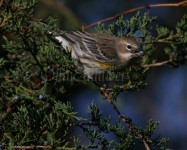
Yellow-rumped Warblers and Cedar Waxwings sharing the berries of a cedar tree in Waukesha County. Photographs taken October 19, 2013.
Binomial name: Setophaga coronata
Category: Wood-Warblers
Description: Both males and females have gray streaks, white on wings, and yellow rumps. Males have black streaking on slate blue backs while females also have brown steaks. Both have black bills and legs.
Size: 4.7″-5.9″ long, 7.5” – 9.4” wingspan
Weight: 0.39 oz. – 0.49 oz.
Habitat: Broadleaf and pine forests, mountains
Diet: Insects such as beetles, ants, aphids, grasshoppers, and spiders, as well as berries, fruits, and seeds
Nesting: The female builds the nest on a conifer branch out of grass, pine needles, twigs, and feathers. The male may help supply materials. The clutch size is 1 to 6 eggs, usually 3 or 4, with 1 to 2 broods laid per season. The female incubates the eggs for 12 or 13 days and the young can fledge after 10 to 14 days.
Notes: Four related species are often lumped together as the Yellow-rumped Warbler: Myrtle Warbler, Audobon’s Warbler, Mexican black-fronted Warbler, and Guatemalan Goldman’s Warbler.
Binomial name: Bombycilla cedrorum
Category: Waxwings
Description: Pale brown on and chest with gray wings and tail. Pale yellow belly with and a bright yellow tip on the tail. Black mask on the face outlined in white and red drops on wings. Black bill and legs.
Size: 5.5” – 6.7” long, 8.7” – 11.8” wingspan
Weight: 1.1 oz.
Habitat: Open woodlands, orchards, and residences, particularly locations with fruit and berry sources
Diet: Berries, fruits, insects, and cedar cones
Nesting: The courtship ritual involves the male doing a “hopping” dance. If a female is interested, she’ll “hop” back. Mating couples will pass small objects between each other such as flowers or food and may rub bills affectionately. Females handle most of the nest-building using twigs, grass, feathers, and animal hair. 4 to 6 eggs will be laid per clutch with 1 to 2 broods per season, and the female incubates them for 11 to 13 days. Both parents will care for the young.
Notes: Unlike most birds, the Cedar Waxwing specializes in eating fruit. Instead of separating and regurgitating seeds from fruit and berries as most birds do, Cedar Waxwings will pass them. Occasionally if fruit has become overripe, Cedar Waxwings may ingest too much and become intoxicated or even die.
To see the gallery of images, please click here.